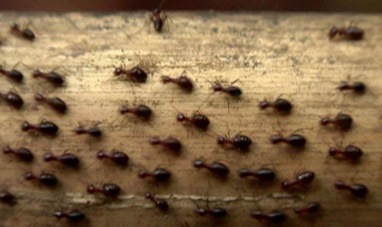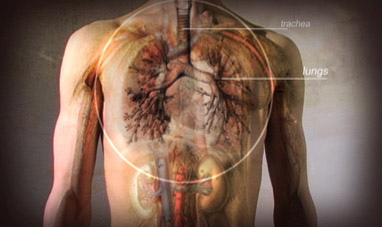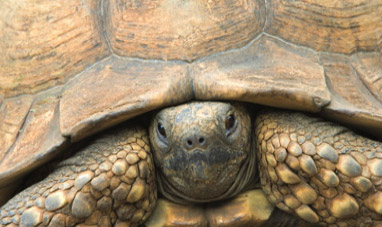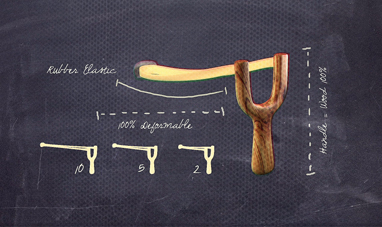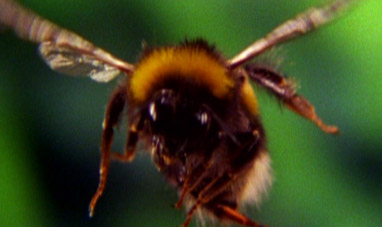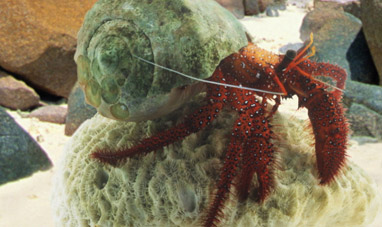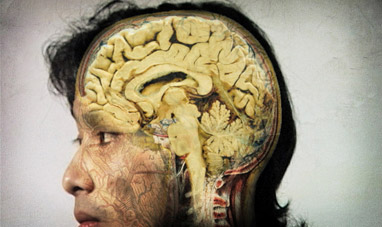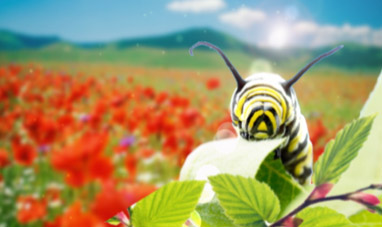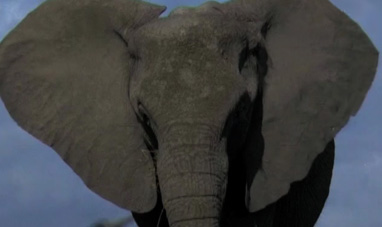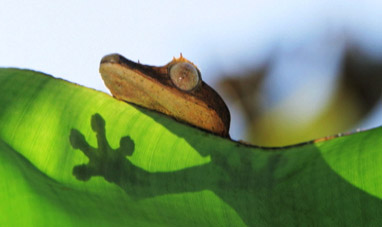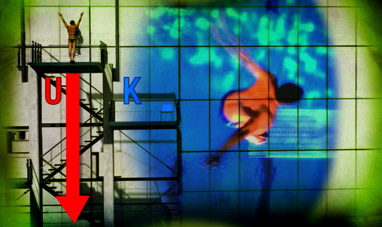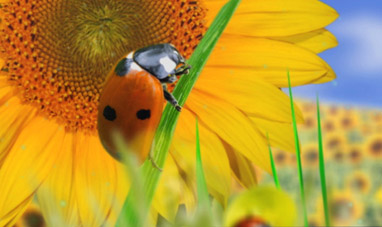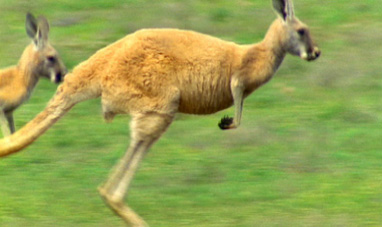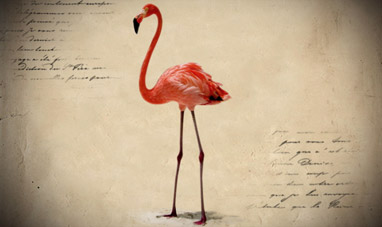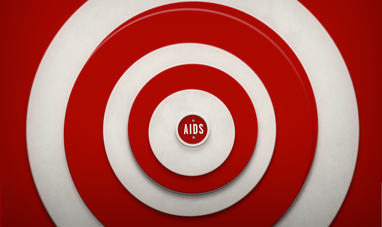The fly is an insect in the Diptera order. Of the many fly species known to man, the most common and widespread is the housefly.
The housefly belongs to the Muscidae family, and can be found on every continent in the world. Houseflies thrive in calm, temperate climates. In colder regions, they only live near human settlements. An adult housefly is between five and eight millimeters long. Its body is covered in fine, dark bristles and is divided into three main sections: the head, thorax and abdomen.
The insect has six legs that allow it to stick to any surface. It also has two antennae, two wings and two minor organs called halters that help it keep its balance. Flies have two large eyes that occupy most of their heads, and let them see in almost 360 degrees. The eyes consist of thousands of units called ommatidia. Each eye unit captures the same image, but from different angles. The synthesis of these different perspectives gives flies a complex and detailed point of view. The fly has special olfactory receptors for identifying smells, most of which are located in bristles on its legs. It has taste receptors both on its legs and in its mouth, which is actually a proboscis the fly uses to suck up liquids. By rubbing their legs together, flies clean their receptors and stay alert.
Flies are omnivores, and can only consume liquids. They dissolve solid foods by pouring saliva on them before sucking them up through their proboscises. Courtship between flies consists of aerial maneuvers and the release of pheromones, or substances that indicate sexual readiness. To mate, the male mounts the female’s back and transmits sperm through its sex organ. Just one such session fertilizes eggs for several cycles. This is possible because the female preserves sperm in a specific pocket of its reproduction system. After they mate, females lay eggs that hatch into larvae. The creatures proliferate in decomposing organic matter, which provides them with food. During the fly’s third stage, it enters a cocoon: the larva encloses itself in a special covering that lets it develop into an adult. This cycle is called complete metamorphosis. In ideal conditions, complete metamorphosis lasts about ten days, but can take longer in colder climates. The housefly’s average lifespan varies from two weeks to two and a half months. Each female lays between 600 and 1,000 eggs during her lifetime. Flies can carry infectious diseases. They spend a great deal of their lives around excrement and decomposing substances, and as a consequence transport harmful microorganisms. Most traditions have little regard for the insects, and even consider them a symbol of evil.
One of the devil’s names, Beelzebub, means “Lord of the Flies.”
The housefly belongs to the Muscidae family, and can be found on every continent in the world. Houseflies thrive in calm, temperate climates. In colder regions, they only live near human settlements. An adult housefly is between five and eight millimeters long. Its body is covered in fine, dark bristles and is divided into three main sections: the head, thorax and abdomen.
The insect has six legs that allow it to stick to any surface. It also has two antennae, two wings and two minor organs called halters that help it keep its balance. Flies have two large eyes that occupy most of their heads, and let them see in almost 360 degrees. The eyes consist of thousands of units called ommatidia. Each eye unit captures the same image, but from different angles. The synthesis of these different perspectives gives flies a complex and detailed point of view. The fly has special olfactory receptors for identifying smells, most of which are located in bristles on its legs. It has taste receptors both on its legs and in its mouth, which is actually a proboscis the fly uses to suck up liquids. By rubbing their legs together, flies clean their receptors and stay alert.
Flies are omnivores, and can only consume liquids. They dissolve solid foods by pouring saliva on them before sucking them up through their proboscises. Courtship between flies consists of aerial maneuvers and the release of pheromones, or substances that indicate sexual readiness. To mate, the male mounts the female’s back and transmits sperm through its sex organ. Just one such session fertilizes eggs for several cycles. This is possible because the female preserves sperm in a specific pocket of its reproduction system. After they mate, females lay eggs that hatch into larvae. The creatures proliferate in decomposing organic matter, which provides them with food. During the fly’s third stage, it enters a cocoon: the larva encloses itself in a special covering that lets it develop into an adult. This cycle is called complete metamorphosis. In ideal conditions, complete metamorphosis lasts about ten days, but can take longer in colder climates. The housefly’s average lifespan varies from two weeks to two and a half months. Each female lays between 600 and 1,000 eggs during her lifetime. Flies can carry infectious diseases. They spend a great deal of their lives around excrement and decomposing substances, and as a consequence transport harmful microorganisms. Most traditions have little regard for the insects, and even consider them a symbol of evil.
One of the devil’s names, Beelzebub, means “Lord of the Flies.”

